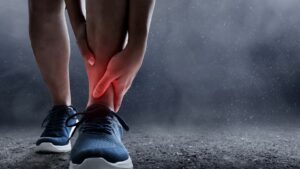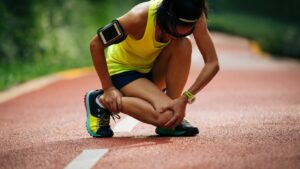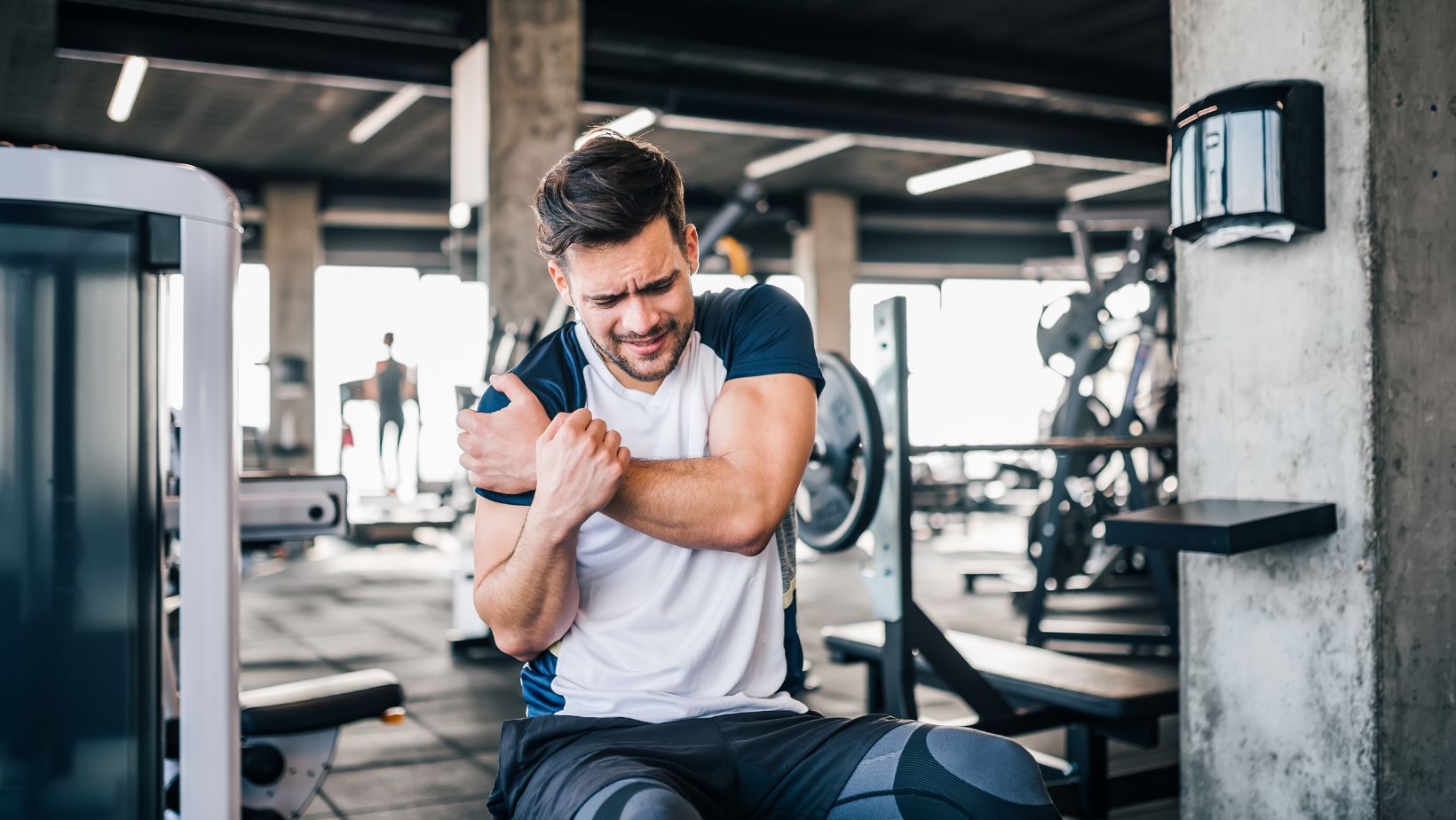Sports kinesiology combines the science of movement with the art of athletic performance. It explores how the human body functions during physical activity and how to optimize that performance through tailored training and rehabilitation techniques. This field plays a crucial role in enhancing athletes’ capabilities while preventing injuries and promoting overall well-being.
With a growing interest in fitness and sports, understanding kinesiology is more important than ever. Coaches, trainers, and athletes alike can benefit from the insights this discipline provides. By delving into biomechanics, anatomy, and physiology, sports kinesiology offers valuable strategies to improve performance and recover effectively. Whether a seasoned athlete or a weekend warrior, knowledge of kinesiology can unlock the potential for peak performance.
Key Takeaways
- Understanding Movement Mechanics: Sports kinesiology combines biomechanics, anatomy, and physiology to analyze and enhance human movement during athletic performance.
- Injury Prevention: By identifying movement patterns and risk factors, kinesiology helps create tailored training programs that improve muscle balance and reduce the likelihood of injuries.
- Rehabilitation Techniques: Kinesiology-driven rehabilitation focuses on restoring functionality through personalized assessments and therapeutic exercises, facilitating effective recovery for injured athletes.
- Assessment Methods: Tools like Functional Movement Screening and gait analysis provide critical insights into athletes’ capabilities, enabling customized training and performance enhancement strategies.
- Advancements in Technology: Emerging tools such as wearable devices, artificial intelligence, and virtual reality are transforming how athletes are monitored and trained, offering real-time data and advanced analytics to optimize performance.
- Holistic Training Approach: Incorporating mental resilience and mindfulness into kinesiology programs demonstrates the growing importance of psychological well-being alongside physical training for peak athletic performance.
Sports Kinesiology
 Sports kinesiology integrates principles of biomechanics, anatomy, and physiology to optimize athletic performance. It focuses on human movement mechanics, emphasizing how muscles, joints, and nerves interact during physical activities. This discipline plays a vital role in enhancing athletic capabilities, minimizing injury risk, and promoting overall well-being.
Sports kinesiology integrates principles of biomechanics, anatomy, and physiology to optimize athletic performance. It focuses on human movement mechanics, emphasizing how muscles, joints, and nerves interact during physical activities. This discipline plays a vital role in enhancing athletic capabilities, minimizing injury risk, and promoting overall well-being.
Understanding sports kinesiology benefits various stakeholders, including coaches, trainers, and athletes. Coaches apply kinesiology concepts to create training programs that improve performance. Trainers utilize biomechanical analysis to identify areas for improvement in technique. Athletes receive tailored advice to enhance movement efficiency and avoid injuries.
Key topics in sports kinesiology include:
- Biomechanics: Studies movement patterns, forces, and the mechanical principles that govern human motion.
- Anatomy: Examines muscle groups and skeletal structures, detailing their roles in sports performance.
- Physiology: Analyzes how the body responds to physical activity, covering components like energy systems and recovery processes.
Research in sports kinesiology delivers insights that inform best practices in training, rehabilitation, and performance enhancement. This information ensures athletes at all levels can achieve their full potential while maintaining their physical health.
Key Principles Of Sports Kinesiology
Sports kinesiology revolves around fundamental concepts that enhance athletic performance and minimize injuries. Understanding these principles enables coaches, trainers, and athletes to apply techniques that lead to optimal outcomes.
Biomechanics
 Biomechanics examines the mechanical aspects of human movement. It focuses on the forces acting on the body and how these forces influence motion. Key topics include:
Biomechanics examines the mechanical aspects of human movement. It focuses on the forces acting on the body and how these forces influence motion. Key topics include:
- Movement Patterns: Analyzing how athletes execute specific movements to improve efficiency.
- Force Production: Studying how muscles generate force and its impact on performance.
- Balance and Stability: Ensuring proper body alignment and control during athletic activities.
By understanding the mechanics of movement, trainers can tailor workouts that enhance strength and prevent injuries.
Anatomy And Physiology
Anatomy and physiology provide essential knowledge of the body’s structure and function. Key components include:
- Muscle Groups: Identifying major muscle groups and their roles during physical activities.
- Skeletal Structure: Examining bones and joints to understand their function in movement.
- Physiological Responses: Analyzing how the body adapts to training, including cardiovascular and muscular responses.
This knowledge allows for personalized training programs that target specific muscle groups, improving performance and facilitating recovery.
Applications In Sports Performance
Sports kinesiology offers significant applications in enhancing sports performance, particularly in the areas of injury prevention and rehabilitation techniques.
Injury Prevention
Injury prevention strategies grounded in kinesiology principles focus on understanding movement mechanics and identifying risk factors. Analysis of biomechanics helps detect movement patterns that may lead to injuries. Trainers utilize assessments that evaluate strength, flexibility, and coordination. Tailored training programs target areas of improvement, enhancing muscle balance and stability. Incorporating exercises like agility drills, balance training, and strength conditioning reduces vulnerability to injuries. Education about proper techniques in training and competition fosters awareness and promotes safer practices.
Rehabilitation Techniques
Rehabilitation techniques informed by kinesiology emphasize restoring functionality and enhancing recovery. Rehabilitation programs integrate individualized assessments to understand specific injuries and physiological responses. Techniques such as neuromuscular re-education support the recovery of motor skills. Therapeutic exercises target weakened areas to rebuild strength and flexibility. Modalities like ultrasound, electrical stimulation, and manual therapy expedite healing by improving circulation and reducing pain. Progress tracking through objective measures ensures adjustments in the recovery plan maximize effectiveness and support athletes’ safe return to sport.
Tools And Techniques In Sports Kinesiology
Sports kinesiology employs various tools and techniques to assess movement and enhance athletic performance. These methods contribute to tailored training programs and effective rehabilitation practices.
Assessment Methods
Assessment methods provide essential insights into an athlete’s physical capabilities and movement patterns. Common techniques include:
- Functional Movement Screening (FMS): This screening identifies movement deficiencies and potential injury risks by assessing fundamental movement patterns. It helps develop appropriate interventions.
- Gait Analysis: This evaluation examines walking and running mechanics, enabling trainers to identify inefficiencies and imbalances. Video capture and motion analysis software often assist in providing detailed assessments.
- Biomechanical Assessments: This method analyzes forces and motions during athletic activities, utilizing tools like force plates and motion capture systems. Understanding these dynamics helps optimize performance and prevent injuries.
- Strength and Flexibility Testing: Measuring muscle strength and flexibility provides insight into an athlete’s physical capabilities. Tests such as the vertical jump and sit-and-reach evaluate performance-related attributes.
Performance Enhancement Strategies
Performance enhancement strategies leverage the insights gained from assessment methods to optimize athletic capabilities. Key strategies include:
- Customized Training Programs: Tailored workouts based on assessment results target specific muscle groups and address identified weaknesses, improving overall performance.
- Biometrics Monitoring: Wearable devices track metrics like heart rate, speed, and distance, allowing for real-time performance evaluations and adjustments. These insights inform training intensity and recovery protocols.
- Neuromuscular Training: This technique focuses on improving coordination and movement efficiency through exercises that enhance muscle activation and control. Plyometrics and balance training are common components.
- Hydration and Nutrition Strategies: Proper nutrition and hydration practices support athletic performance. Personalized plans, based on an athlete’s specific needs and activity level, enhance endurance and recovery.
These tools and techniques in sports kinesiology create a comprehensive approach to enhancing performance and ensuring athletes reach their full potential.
Future Trends In Sports Kinesiology
Emerging technologies and methodologies continually reshape sports kinesiology. Advancements in wearable technology play a pivotal role in performance monitoring. Devices such as smartwatches and motion trackers provide real-time data on physiological metrics, allowing for immediate adjustments to training routines. Enhanced data analytics further supports coaches and trainers in evaluating athletes’ performance trends over time.
Artificial intelligence (AI) integration represents another trend in sports kinesiology. AI algorithms analyze vast amounts of movement data, identifying patterns and predicting injury risks. This technology enables tailored training programs that align with each athlete’s unique biomechanics and physiology.
Virtual reality (VR) is also finding its place in training environments. VR simulations offer athletes immersive experiences that enhance skill development and movement techniques. By creating a controlled environment, athletes can practice specific scenarios without the risk of physical strain or injury.
Injury prevention continues to evolve through biomechanics research. Understanding movement dysfunctions enables practitioners to implement targeted interventions that minimize the likelihood of injuries. Techniques like dynamic warm-ups and corrective exercises become increasingly common in training protocols.
The focus on holistic training approaches demonstrates a shift toward enhancing mental as well as physical performance. Mindfulness and psychological resilience training are becoming integral components of kinesiology programs. Athletes gain tools to manage stress and optimize their mental focus during competition.
Lastly, community engagement through educational workshops and outreach initiatives grows in significance. Coaches and athletes benefit from knowledge-sharing opportunities that emphasize kinesiology principles. Collaboration among sports professionals fosters innovative practices that elevate the entire field of sports kinesiology.
Performance and Injury Prevention
Sports kinesiology stands at the intersection of science and athletic performance. Its principles empower coaches and trainers to create tailored programs that enhance movement efficiency and minimize injury risks. As technology continues to advance, the field is evolving, integrating innovative tools that provide real-time insights into performance.
The focus on biomechanics, anatomy, and physiology ensures athletes receive the personalized support they need to excel. With an emphasis on injury prevention and rehabilitation, sports kinesiology not only enhances performance but also promotes long-term physical health. As awareness grows, the potential for athletes to reach their peak performance while maintaining their well-being becomes increasingly achievable.
